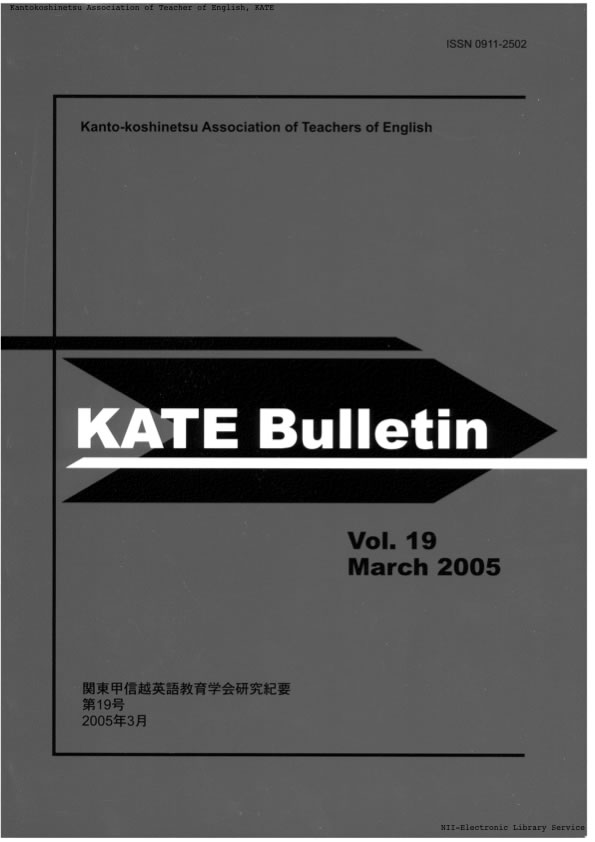Volume 19
Displaying 1-16 of 16 articles from this issue
- |<
- <
- 1
- >
- >|
-
Article type: Cover
2005 Volume 19 Pages Cover1-
Published: March 01, 2005
Released on J-STAGE: July 14, 2017
Download PDF (3223K) -
Article type: Index
2005 Volume 19 Pages Toc1-
Published: March 01, 2005
Released on J-STAGE: July 14, 2017
Download PDF (34K) -
Article type: Article
2005 Volume 19 Pages 1-10
Published: March 01, 2005
Released on J-STAGE: July 14, 2017
Download PDF (848K) -
Article type: Article
2005 Volume 19 Pages 11-21
Published: March 01, 2005
Released on J-STAGE: July 14, 2017
Download PDF (910K) -
Article type: Article
2005 Volume 19 Pages 23-33
Published: March 01, 2005
Released on J-STAGE: July 14, 2017
Download PDF (830K) -
Article type: Article
2005 Volume 19 Pages 35-46
Published: March 01, 2005
Released on J-STAGE: July 14, 2017
Download PDF (1206K) -
Article type: Article
2005 Volume 19 Pages 47-58
Published: March 01, 2005
Released on J-STAGE: July 14, 2017
Download PDF (1064K) -
Article type: Article
2005 Volume 19 Pages 67-78
Published: March 01, 2005
Released on J-STAGE: July 14, 2017
Download PDF (1035K) -
Article type: Article
2005 Volume 19 Pages 79-90
Published: March 01, 2005
Released on J-STAGE: July 14, 2017
Download PDF (1116K) -
Article type: Article
2005 Volume 19 Pages 91-101
Published: March 01, 2005
Released on J-STAGE: July 14, 2017
Download PDF (808K) -
Article type: Article
2005 Volume 19 Pages 103-113
Published: March 01, 2005
Released on J-STAGE: July 14, 2017
Download PDF (935K) -
Article type: Article
2005 Volume 19 Pages 115-126
Published: March 01, 2005
Released on J-STAGE: July 14, 2017
Download PDF (896K) -
Article type: Appendix
2005 Volume 19 Pages App1-
Published: March 01, 2005
Released on J-STAGE: July 14, 2017
Download PDF (30K) -
Article type: Appendix
2005 Volume 19 Pages App2-
Published: March 01, 2005
Released on J-STAGE: July 14, 2017
Download PDF (30K) -
Article type: Appendix
2005 Volume 19 Pages App3-
Published: March 01, 2005
Released on J-STAGE: July 14, 2017
Download PDF (30K) -
Article type: Appendix
2005 Volume 19 Pages App4-
Published: March 01, 2005
Released on J-STAGE: July 14, 2017
Download PDF (30K)
- |<
- <
- 1
- >
- >|
